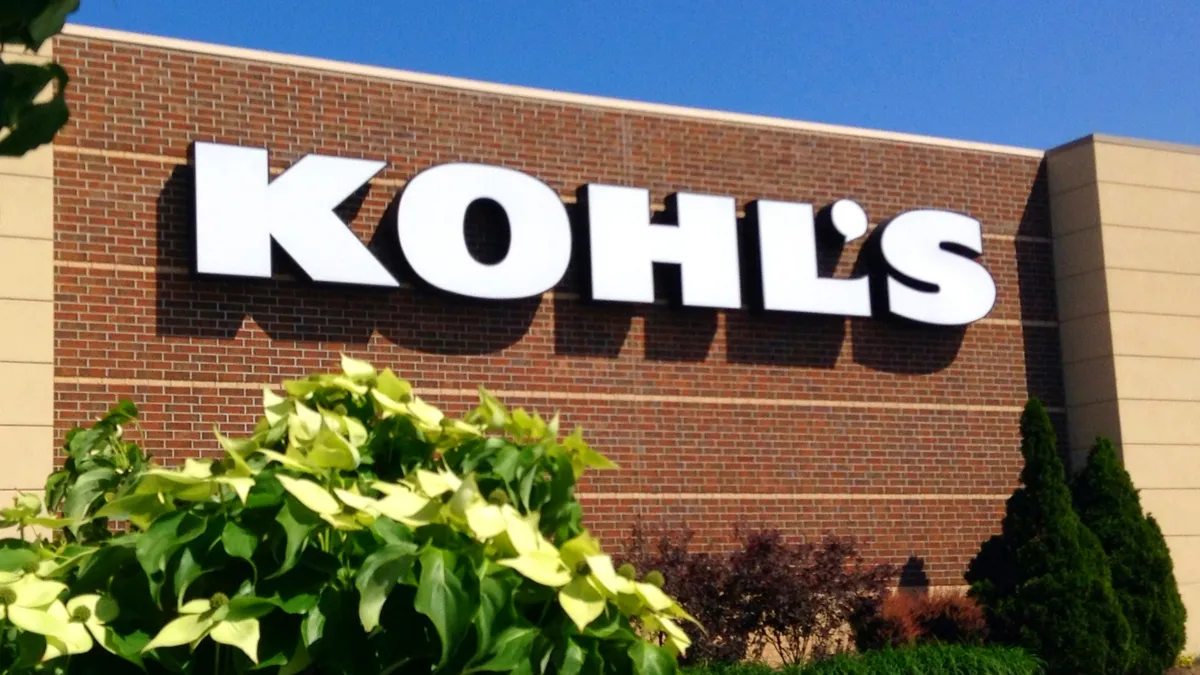Dive Brief:
-
Kohl’s on Wednesday reported that Q4 net sales fell 7.2% year over year to $5.8 billion, with comparable sales down 6.6%. Net loss narrowed to $273 million from $299 million a year ago.
-
Gross margin contracted by 1,016 basis points to 23%, mostly due to clearance markdowns. Inventory was down 4% year over year, according to a company press release.
-
For the full year, net sales fell 7.1% compared to 2021 to $17.2 billion, with comparable sales down 6.6%. Gross margin contracted by 485 basis points to 33.2%. The retailer swung to a $19 million net loss from net income of $938 million the previous year.
Dive Insight:
Kohl’s is refining its turnaround under newly arrived CEO Tom Kingsbury.
One tactic could entail changing up how Kohl’s prices its goods, though in a call with analysts Wednesday Kingsbury emphasized that the retailer is taking great care not to rattle its customers.
“We know that our promotional strategy at times can be a disadvantage to Kohl's when compared to our competitors’ price-focused strategies,” he said, adding that the goal is to reduce the reliance on general promotions but not to interfere with the popular Kohl’s Cash program. “We will test everyday value pricing with a small percentage of our product assortment and, if successful, grow it appropriately in subsequent years. We fully recognize the sensitivities around pricing with our customers and we'll approach this with great measure and flexibility.”
Radical changes to pricing strategies have become a sensitive topic in retail since what is widely perceived as a disastrous effort about a decade ago by JC Penney under Ron Johnson. That department store replaced chronic markdowns with everyday value prices but soon backed away from the plan after customer outcry, and Johnson left under a cloud after a short tenure.
Kohl’s Sephora partnership offered a bright spot in Q4, helping push beauty sales up 90% in Q4, with beauty comp growth at high-single digits in the 200 Sephora Kohl’s shops that opened in 2021 and better-than-expected sales in the 400 that opened in 2022, executives said. Kingsbury said the goal is to expand those concessions to all stores by 2025. But the effort has its costs, as jewelry sales suffered from the removal of cases to make room for Sephora counters, CFO Jill Timm said during the call.
More broadly, Kohl’s must upgrade its merchandise and stores if it has any hope of recapturing the market share it has lost in the past few years, according to GlobalData Managing Director Neil Saunders, who in emailed comments called its stores “increasingly shabby and undisciplined.”
“Put bluntly, this is not what most shoppers want, and it acted as a major deterrent to visiting and buying over the holiday period,” he warned. “Sadly, this problem has been getting worse over time and it is one of the first things the new executive team should address if it wants to stop the rot.”
Kingsbury himself acknowledged such issues, and said that improvements to inventory management and merchandising are already under way, with a new emphasis on private label, home goods and gifting. Stores will be modernized with better sightlines and less signage, and e-commerce will get a boost in part from expanding Kohl’s online third-party marketplace, he said.
“It doesn't happen overnight,” he said. “But we've already made some progress. Obviously, we've got our inventories at the level they should be and we're planning our inventories for the first and second quarter appropriately. ... We're going to make progress in 2023. But as with any business it takes a while for it to really get traction.”
The project comes at a tough time for the department store, which saw margins decimated by markdowns in the fourth quarter. The company also aims to streamline costs to improve its bottom line, executives said.












